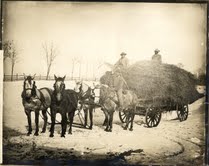African Stories of New England Feb. 19th
 On Wednesday, February 19, 2014, at 7:30 p.m., historian Jennifer Pustz will give an illustrated talk based on “Uncovering African American Stories at Historic New England.â€
On Wednesday, February 19, 2014, at 7:30 p.m., historian Jennifer Pustz will give an illustrated talk based on “Uncovering African American Stories at Historic New England.â€
Though too often hidden, the contributions of African Americans, enslaved and free, are important to understanding the history of New England. The story of Prince Sayward of York, Maine, who fought in the American Revolution, and that of Cuff Gardner, a free African American who worked at Rhode Island’s Casey Farm at the turn of the nineteenth century, reveal new aspects of daily life at these sites. These stories are about labor, but also about these individuals’ participation in the fight for freedom and in such uniquely New England traditions as “Negro Elections.â€
Jennifer Pustz is museum historian at Historic New England, author of Voices from the Back Stairs: Interpreting Servants’ Lives at Historic House Museums, and a member of the Royall House and Slave Quarters board of directors. She has a Ph.D. in American Studies from the University of Iowa. Historic New England is a museum of cultural history that collects and preserves buildings, landscapes, and objects dating from the seventeenth century to the present and uses them to keep history alive and to help people develop a deeper understanding and enjoyment of New England life and appreciation for its preservation.
The program will be held at the Royall House and Slave Quarters at 15 George Street, Medford, and is free to Royall House and Slave Quarters members. General admission is $5. Doors open at 6:30 p.m. for the museum shop and exhibits. On-street parking is available, and the museum is located on the 96 and 101 MBTA bus routes. Please email director@RoyallHouse.org for more information or visit RoyallHouse.org.
– Submitted by Tom Lincoln, Royall House Director. Pictured: Three African American farm hands working on the estate of James Monroe, Oak Hill, Virginia” c. 1905-1915. Baldwin Coolidge, photographer. Courtesy Historic New England Library and Archives.